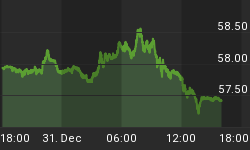In the last update it was stated that in the event of the dollar breaking higher, silver would be likely to break below $7.50 and drop back towards its moving averages. The dollar did break higher and silver duly broke below $7.50 and dropped back to its 50-day moving average, bottoming short-term in the $7.35 area, before rallying again. The break below $7.50 means that silver is still in a reactive phase, like gold, and is therefore vulnerable to renewed decline short-term, despite the overbought condition that had developed by mid-October having largely unwound.

As pointed out in the last update, there is a big difference between silver and gold at this time that is very clear on the 2-year silver chart, and that is that while gold has virtually no recent overhead resistance to contend with, silver has a lot, between the current price and the April 2004 at about $8.40. Although silver succeeded in breaking out to a new high for the year in October, it is clearly finding it heavy going rising up through this resistance, especially as, like gold, it is not getting any help from the dollar at this time.

As detailed in the Gold Market update, it is considered likely that the current dollar rally will pause to consolidate in the 92.3 area, i.e. a little above where it is now, and then break higher again, which can be expected to result in gold retreating further towards its 200-day moving average to complete the current reactive phase, and silver can be expected to do likewise, which would result in it dropping back to the $7.20 area.
Finally, a breakdown by gold from its potentially bearish rising wedge pattern, which might result from continued vigorous gains by the dollar coupled with a rally in the broad stock market, both of which are looking increasingly likely, would have bearish implications for silver, which, unlike gold, does not have a clear level at which it can be said to have broken down.
















